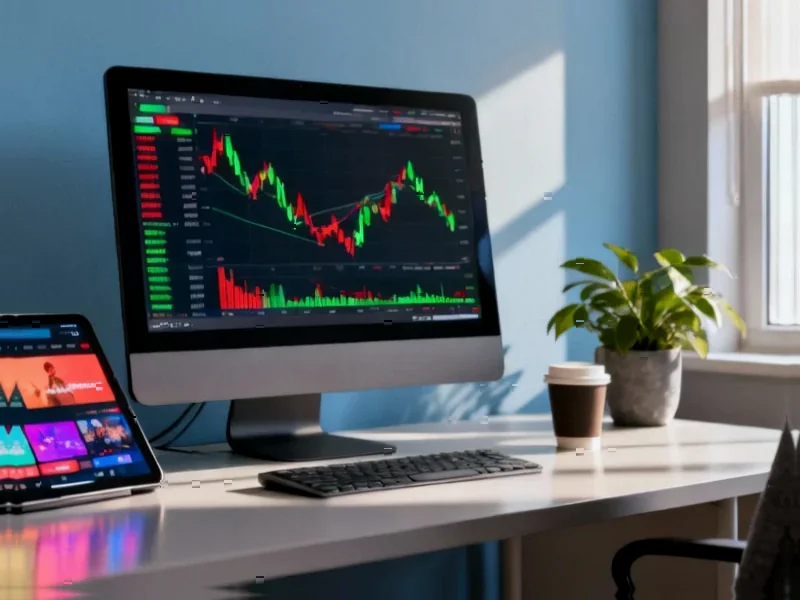According to Forbes, Cisco Systems has returned an astonishing $143 billion to shareholders over the past decade through dividends and stock buybacks, placing the company 12th historically among all companies for total capital returned. While the networking giant may not generate the same excitement as high-growth tech stocks, its consistent cash generation has created substantial shareholder value. The analysis highlights that Cisco has experienced significant volatility despite this reliability, including an 86% drop during the Dot-Com crash, 60% decline in the Global Financial Crisis, and more recent drops of 37% during inflation surges and 34% during COVID. This pattern of massive capital returns raises important questions about the balance between rewarding shareholders and investing in future growth.
The Shareholder Wealth vs. Innovation Investment Dilemma
Cisco’s $143 billion capital return represents a fundamental strategic choice that prioritizes current shareholder returns over aggressive innovation investment. While this approach has benefited long-term investors, it creates a challenging dynamic for the company’s competitive positioning. The networking industry is undergoing massive transformation with cloud computing, software-defined networking, and security convergence reshaping traditional hardware markets. Companies that consistently return this scale of capital to shareholders inherently limit their ability to make bold R&D investments or pursue transformative acquisitions. Cisco’s revenue comparison data likely shows the impact of this strategy on growth rates compared to peers reinvesting more heavily in innovation.
Enterprise Customer Implications
For enterprise customers, Cisco’s capital return strategy creates both stability concerns and innovation questions. The company’s reliable cash flow provides assurance of ongoing support and maintenance for existing infrastructure, which is crucial for organizations running critical networks. However, the limited R&D investment relative to capital returns may slow the pace of meaningful innovation in enterprise networking solutions. Customers investing in Cisco ecosystems face the risk of gradual technological obsolescence as competitors like Arista Networks and Juniper push more aggressively into software-defined and cloud-native networking. This creates a strategic dilemma for IT leaders balancing the comfort of Cisco’s stability against the need for future-proof networking architectures.
The Employee and Talent Perspective
Cisco’s massive capital return program has significant implications for the company’s workforce and talent acquisition strategy. While stable dividend payments can make the company attractive to certain types of investors, they may limit resources available for competitive compensation, research facilities, and ambitious projects that attract top engineering talent. The technology labor market increasingly favors companies pursuing breakthrough innovations and rapid growth, which Cisco’s capital-intensive shareholder return model may not support. This creates potential challenges in recruiting and retaining the next generation of networking engineers and software developers who are drawn to more dynamic, high-growth environments.
The Shifting Competitive Landscape
Cisco’s position as the 12th largest capital returner in history comes at a time when the networking industry is being disrupted from multiple directions. Cloud providers like Amazon Web Services and Microsoft Azure are building their own networking stacks, while software-defined networking companies are eating into traditional hardware margins. Cisco’s valuation ratios comparison likely reflects how the market is pricing this transition risk relative to more growth-oriented tech companies. The company faces the challenge of maintaining its dividend and buyback commitments while simultaneously navigating one of the most significant technological shifts in its history.
Long-Term Sustainability Concerns
The historical volatility highlighted in the Forbes analysis—including massive drops during market crises—suggests that even reliable cash generators like Cisco face substantial risks during industry transitions. The company’s current strategy of returning massive capital to shareholders works well in stable markets but may leave it vulnerable during periods of rapid technological change. As networking becomes increasingly software-defined and cloud-native, Cisco must balance its commitment to shareholder returns with the substantial investments required to remain relevant in the next decade. The $143 billion returned to investors represents capital that could have funded multiple breakthrough innovations or strategic acquisitions to position the company for future growth.
Investor Segmentation Impact
Cisco’s capital return strategy naturally attracts a specific type of investor while potentially alienating others. Income-focused and value investors appreciate the reliable dividends and buybacks, viewing the company as a stable cash generator in a volatile tech sector. However, growth-oriented investors may find the limited reinvestment in innovation concerning, particularly as the networking industry undergoes fundamental transformation. This creates a self-reinforcing cycle where the shareholder base increasingly consists of investors who prioritize capital returns over growth, potentially making it more difficult for management to shift strategy toward more aggressive innovation investment when needed.




